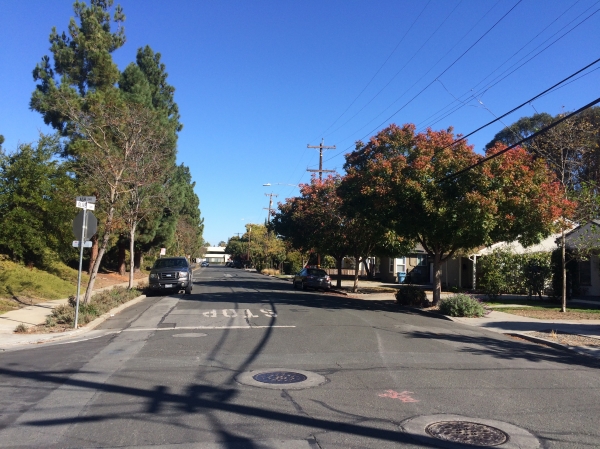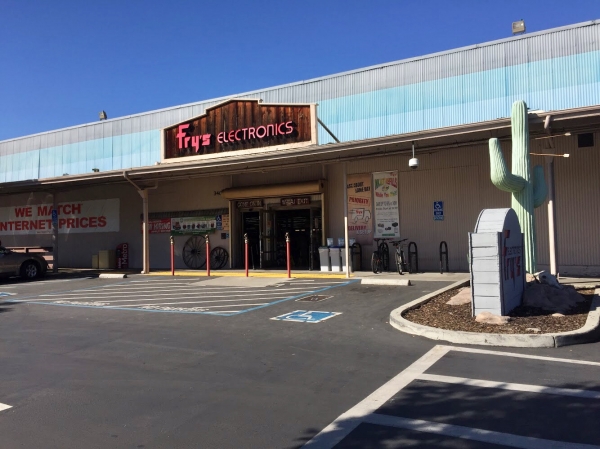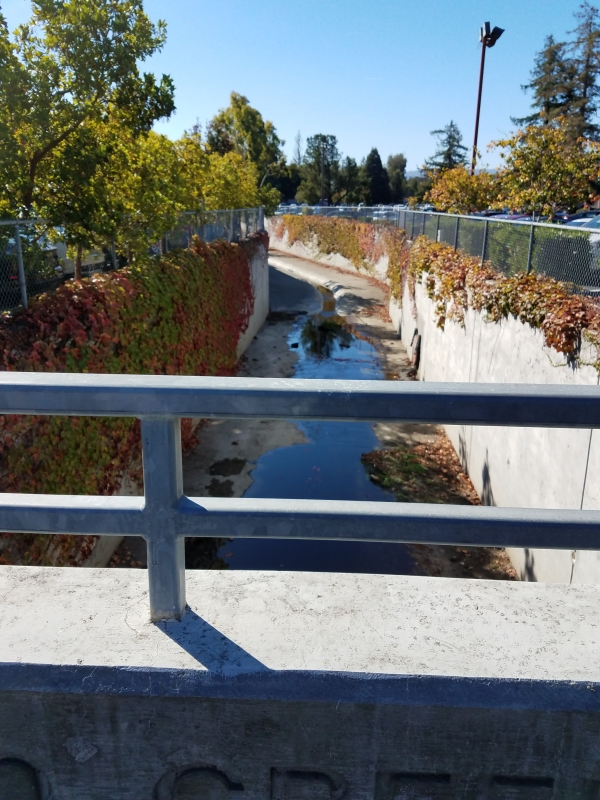For Palo Alto's elected leaders, the eclectic Ventura neighborhood doesn't just represent a prime opportunity to boost the city's supply of housing.
It also represents a new way to plan — one that involves more dialogue between residents and property owners, more public meetings, greater city staff involvement and less fealty to established zoning patterns.
If successful, the North Ventura Coordinated Area Plan could transform a 60-acre section of Ventura, creating residential complexes, park space and retail as well as improving transportation. It could also serve as a blueprint for reinvigorating other neighborhoods, including downtown Palo Alto, where the City Council plans to roll out a similar exercise in the coming months.
The Ventura effort, which has been quietly advancing since last fall, will seize the spotlight on Monday night, when the council holds a special town hall session to discuss the plan. The meeting at Ventura Community Center will also give residents a chance to review recent progress and weigh in on what they'd like to see in the plan — and in the neighborhood.
While area plans, often known as "specific plans" and "precise plans," are fairly common in the region (Mountain View's recently adopted North Bayshore Precise Plan is a prominent example), Palo Alto's record with this zoning tool is at best mixed. The city used area planning in the early 2000s to reimagine a nine-block section south of downtown, adopting the "South of Forest Area (SOFA)" Coordinated Area Plan in two phases. Spurred by the relocation of the Palo Alto Medical Foundation, the plan resulted in the creation of 160 housing units, about 30,000 square feet of retail and office space and the creation of Heritage Park.
Other efforts to adopt new visions for "underdeveloped" areas have fizzled. The council approved in 2012 a "concept area plan" for the East Meadow Circle and Fabian Way area, which aimed to encourage commercial development (that plan, much like the goal it strove for, largely has been abandoned by the council).
City planners also spent several years developing a concept area plan for the California Avenue area, which called for (among other changes) the creation of a "technology corridor overlay" zone on Park Avenue to attract more tech firms, policies to encourage more mixed-use developments and the addition of a new hotel. The council ultimately agreed in 2014 not to adopt that plan.
Now, the council is hoping for a better result in Ventura. Several current council members have lauded area plans as a great tool for both addressing the regional housing shortage and for enhancing local neighborhoods. Vice Mayor Adrian Fine has been a major supporter of such plans and Mayor Eric Filseth highlighted the North Bayshore plan in Mountain View in his "State of the City" speech as a rare and great example of the city and a major employer (Google) coming together to craft a proposal that includes a significant amount of housing (9,000 units) along with 3.5 million square feet of commercial space.
Councilman Tom DuBois went as far as to propose last month that the council make Ventura one of its top priorities for 2019, though the council stopped short of adopting his proposal.
Palo Alto's recently adopted Comprehensive Plan also includes a policy urging coordinated area plans for parts of the city where "significant change is foreseeable." Comprehensive Plan programs call for use of this planning tool to create a new vision for downtown as well as North Ventura.
The Ventura plan is focusing on an area bounded by Page Mill Road, El Camino Real, Lambert Avenue and the Caltrain tracks. A new report from the Department of Planning and Community Environment calls the site "a rare opportunity within the City to plan proactively."
Housing will also be a major focus, with the site of Fry's Electronics as the most likely location for new residential complexes. The report calls the Fry's area "one of the city's largest housing opportunity sites."
While the broader community has yet to truly get involved in the exercise, area stakeholders and members of the 14-member North Ventura Coordinated Area Plan Working Group have already indicated what they'd like to see in the new Ventura. Housing is a popular proposition, though participants at the most recent meeting on Feb. 5 said they would like to see the city focus on affordable housing or, at the very least, to have a mix of market- and below-market-rate units.
More than 70 percent of the participants at the meeting also said they would support ignoring the city's 50-foot height limit in order to encourage housing construction, though 21 percent said they would not.
Attracting new housing construction will have to overcome steep economic barriers, however. City consultants Perkins+Will, in meetings with Ventura property owners, residents and housing advocates, found that the owners of the Fry's site are looking for "significantly denser" housing to be in the plan — which would make residential economically more on par with office space, which fetches higher rates.
Staff for the landowner, The Sobrato Organization, also discussed with the city's consultants a scenario in which "stack parking" would be introduced just north of Fry's, opening up the southern parking lot for residents. In this case, Portage Avenue would separate the residential and office buildings.
Residents, for their part, have been calling for more green space, retail shops and pedestrian amenities. The idea of refurbishing the concrete Matadero Creek to create a new walking trail and enhance the natural habitat also proved popular, both at stakeholder meetings and at the Feb. 5 community meeting, where it emerged as the most popular recreational amenity.
Some residents have also proposed widening sidewalks on Park Boulevard and prohibiting cars from the neighborhood streets within the area. The idea of restricting car access came out of the consultants' January meeting with Ventura residents David Adams, DiHuyen Ho, Linnea Wickstrom and Waldeck Kaczmarski, who argued that access to new developments should be "limited to emergency access and commercial delivery." Otherwise, they argued, cars should only enter and exit the neighborhood from El Camino Real and Oregon Expressway.
Most of the 35 people who attended the Feb. 5 meeting on the Ventura plan shared those sentiments, with just 12 percent saying they would like to see improvements that create "more connections for pedestrians, bikes and cars." By contrast, 69 percent supported improvements that create "more connections for pedestrians and bikes, but not cars," according to real-time polls conducted at the meeting.
Adams and Ho, who reside on Olive Avenue, also urged the city to make sure that green space on what is now the Fry's property is accessible to both those future occupants and to nearby residents.
"We would hate to see a 'fortress' type development with buildings around the outside and community green space in the middle making it uninviting to the general public," Adams and Ho wrote in a letter to the city.
After Monday's council meeting, staff and consultants will hold two more Working Group meetings before putting together the draft plan over the summer and fall months. If things go as planned, the council would adopt the new document at the end of this year or in early 2020.





Comments
Downtown North
on Mar 7, 2019 at 8:05 pm
on Mar 7, 2019 at 8:05 pm
Let's remember that this site is not zoned for office development or housing. It is commercial. The owner's of the property have no right to demand anything when it comes to office development or massive housing to make them more money.
This area is a resource to the residents of Palo Alto. It is the last large parcel of land in town that could be used by residents as a large park and community center in this area of town. The city is over 100 acres behind in the urban park land that it is suppose to provide to residents per the comprehensive plan. The bulk of this land should be rezoned to give residents a better quality of life with community spaces, playing fields and park space.
We should not add any more office development because we already have more jobs than housing in town. Further if we do build any housing it should all be deed restricted to house only people who work for the city. This way we can start to house some of the middle class people who are priced out of living in the city but who we desperately need to live close by in case of emergencies (think linemen who restore power after major storms or earthquakes, or essential personnel for the police 911 dispatch center).
We can do better than to over-build this area with massive office developments and high rise housing for overpaid tech workers. This will hurt the environment, increase traffic, overcrowd schools and community services while continuing the destruction of livability in the city.
Midtown
on Mar 7, 2019 at 10:31 pm
on Mar 7, 2019 at 10:31 pm
I wonder if people realize the only way to make the city comply with the comprehensive plan is a lawsuit. The plain fact is that this city's administration - council and planning departments - work for developers, not the citizenry.
Another Palo Alto neighborhood
on Mar 8, 2019 at 10:36 am
on Mar 8, 2019 at 10:36 am
Just don't let them include even 1 square foot of office space. Start letting in office space, and, the next thing you know, there will be 3000 new residential units with office space for 6000 new jobs "in order to make the development profitable". "We" have been falling for this ploy every time.
=> Not one square foot of office space. <=
Another Palo Alto neighborhood
on Mar 8, 2019 at 5:12 pm
on Mar 8, 2019 at 5:12 pm
The first comment is absolutely wrong about the zoning. The Fry’s site has been zoned RM-30 for a long time. That would be for medium-density multi-family residential with 16 to 30 units per acre.
Another Palo Alto neighborhood
on Mar 9, 2019 at 1:45 pm
on Mar 9, 2019 at 1:45 pm
Posted by Check the Zoning, a resident of Another Palo Alto neighborhood
>> The first comment is absolutely wrong about the zoning. The Fry’s site has been zoned RM-30 for a long time.
Yep. And, I would be OK if they wanted to push that to 35 units/acre if they have parking for two cars per unit and stay under 50 feet. It can be done with human-scale row houses: Web Link
Just don't allow any new office space. Zero. If a "modest" 3% of the site is allowed to go to office space, it could negate the entire effect of the new housing wrt jobs/housing. Don't let the developers pull a fast one and allow office space to make the jobs/housing imbalance worse.
Ventura
on Mar 10, 2019 at 10:58 am
on Mar 10, 2019 at 10:58 am
If the city wants to reduce car traffic through this area, they have to provide alternative transportation options. For years, the city has been talking about building a bicycle bridge over the Caltrain tracks to connect Ventura to the Bryant Bicycle Boulevard. Is this ever going to happen? This will also be hugely useful to students bicycling from Midtown to Gunn High School (instead of the super-congested Charleston Road bike route).